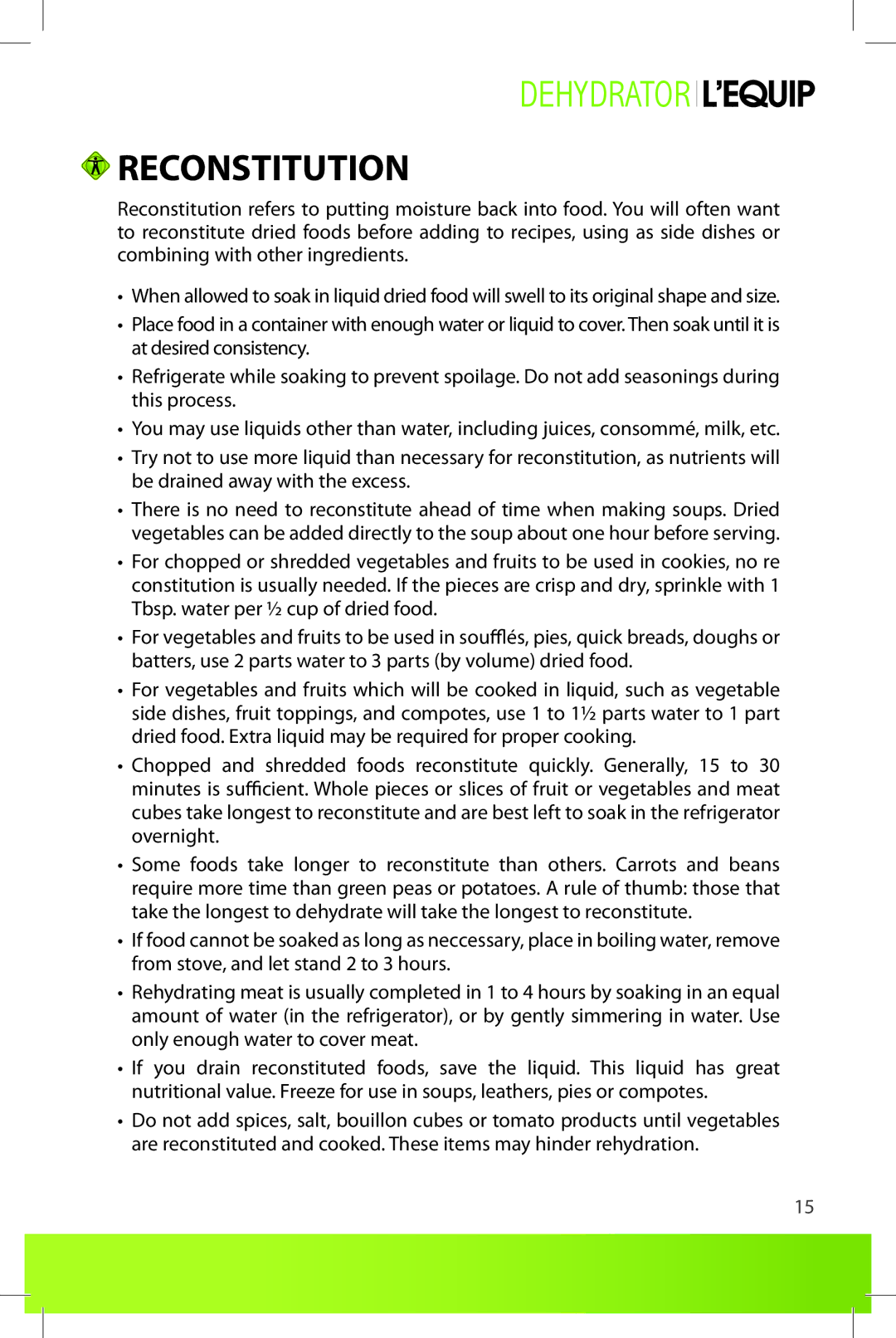
DEHYDRATOR 







 RECONSTITUTION
RECONSTITUTION
Reconstitution refers to putting moisture back into food. You will often want to reconstitute dried foods before adding to recipes, using as side dishes or combining with other ingredients.
•When allowed to soak in liquid dried food will swell to its original shape and size.
•Place food in a container with enough water or liquid to cover. Then soak until it is at desired consistency.
•Refrigerate while soaking to prevent spoilage. Do not add seasonings during this process.
•You may use liquids other than water, including juices, consommé, milk, etc.
•Try not to use more liquid than necessary for reconstitution, as nutrients will be drained away with the excess.
•There is no need to reconstitute ahead of time when making soups. Dried vegetables can be added directly to the soup about one hour before serving.
•For chopped or shredded vegetables and fruits to be used in cookies, no re constitution is usually needed. If the pieces are crisp and dry, sprinkle with 1 Tbsp. water per ½ cup of dried food.
•For vegetables and fruits to be used in soufflés, pies, quick breads, doughs or batters, use 2 parts water to 3 parts (by volume) dried food.
•For vegetables and fruits which will be cooked in liquid, such as vegetable side dishes, fruit toppings, and compotes, use 1 to 1½ parts water to 1 part dried food. Extra liquid may be required for proper cooking.
•Chopped and shredded foods reconstitute quickly. Generally, 15 to 30 minutes is sufficient. Whole pieces or slices of fruit or vegetables and meat cubes take longest to reconstitute and are best left to soak in the refrigerator overnight.
•Some foods take longer to reconstitute than others. Carrots and beans require more time than green peas or potatoes. A rule of thumb: those that take the longest to dehydrate will take the longest to reconstitute.
•If food cannot be soaked as long as neccessary, place in boiling water, remove from stove, and let stand 2 to 3 hours.
•Rehydrating meat is usually completed in 1 to 4 hours by soaking in an equal amount of water (in the refrigerator), or by gently simmering in water. Use only enough water to cover meat.
•If you drain reconstituted foods, save the liquid. This liquid has great nutritional value. Freeze for use in soups, leathers, pies or compotes.
•Do not add spices, salt, bouillon cubes or tomato products until vegetables are reconstituted and cooked. These items may hinder rehydration.
15
